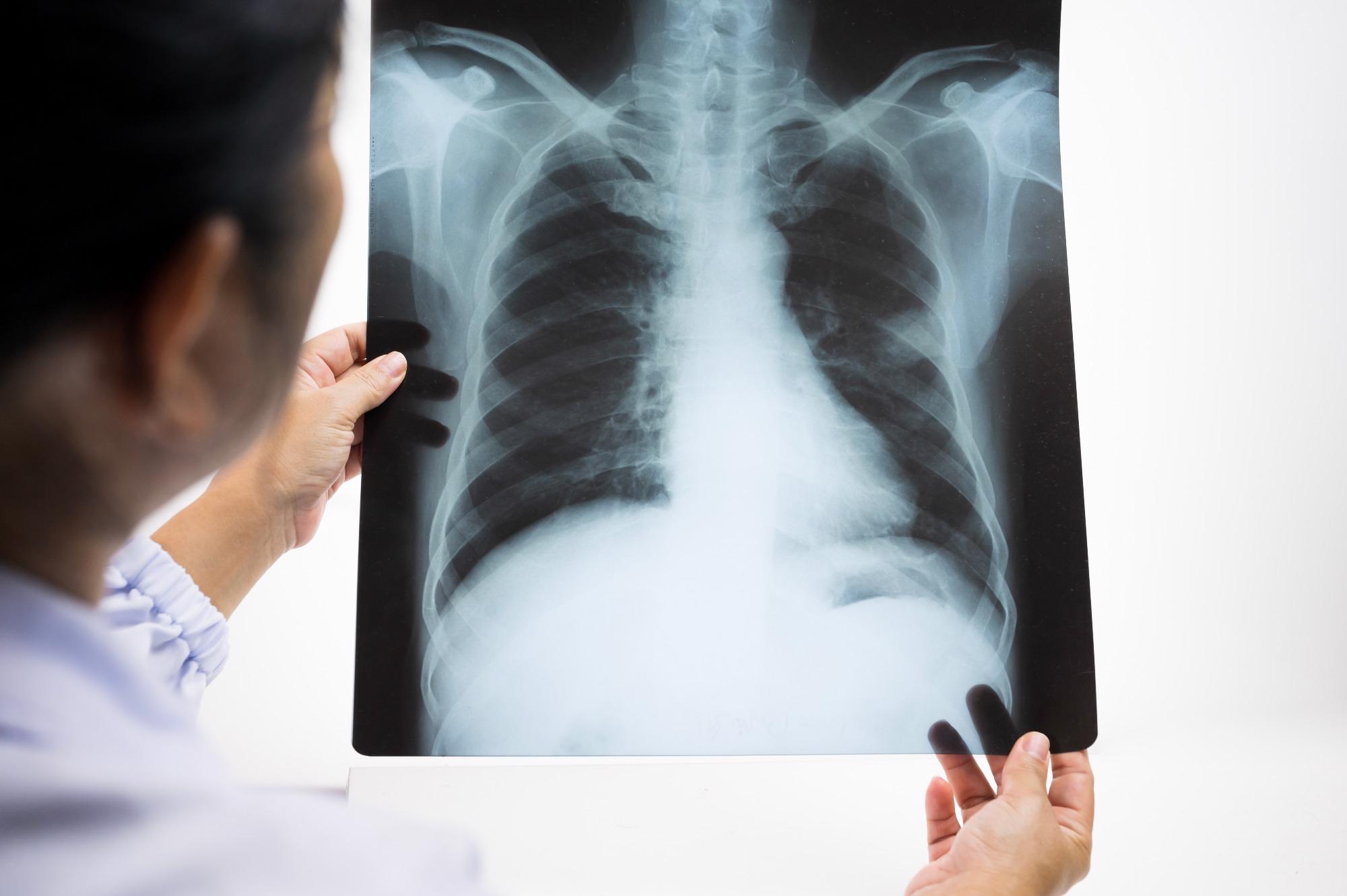
Image Credit: Komsan Loonprom / Shutterstock.com
A new type of 3D printed airway stent could make treating upper airway obstructions quicker and safer.
Obstruction of central airways and the impairment of airflow that results from it is a major cause of death in surgery, especially for patients suffering from lung cancer, and because of a major rise in this disease, cases of central airway obstruction (CAO) are also on the rise.
This narrowing — or stenosis — of the trachea and the passageways that lead from it to the lungs can be combated through the insertion of a stent to widen the passages and restore airflow.
The stents currently used by the medical profession are made from either metal or silicone. Whilst providing a quick solution to stenosis, there are numerous problems with these devices. For example; metal stents have to be removed by a further operation, which can cause tissue damage and other difficulties. Whilst silicon stents can shift away from the area they are needed. Ultimately, these issues arise from the fact that stents aren’t really designed to conform to the anatomy of the patient.
Now researchers at ETH Zurich have developed a new stent that could sidestep these issues.
Working in conjunction with the University Hospital Zurich and the University of Zurich, the team made up of scientists from the Complex Materials and Drug Formulation and Delivery groups at EHT Zurich have devised an airway stent that is not only tailored to patients, but can dissolve gradually after it is implanted.
This promising development opens up prospects for the rapid production of customized medical implants and devices that need to be very precise, elastic, and degradable in the body.
Jean-Christophe Leroux, Professor of Drug Formulation and Delivery, ETH Zurich
The technique that could lead to the safer and simpler treatment of stenosis is detailed in a paper published in the journal Science Advances¹.
Tailoring Stents to Individual Patients
Personalized medicine is a growing field that primarily involves tailoring medication to the individual, but the ETH Zurich team’s stent could mark the development of other medical interventions taking a more ‘personalized’ approach.
The stent is comprised of a specially created light-sensitive resin shaped by a form of 3D printing called digital light processing (DLP). The resin creates a stent that has elastic properties and is biodegradable.
In order to tailor the device to individual patients, the researchers use tomography to produce a cross-sectional image of their airways. This information is then sent to the DLP printer, which stacks thin layers of the team’s resin and uses UV light to harden selected sections, thus building a fully-customized stent.
As well as representing a significant step forward for stents, the team’s findings also represent an impressive development in the realm of 3D printing.
Relying on Resin
DLP printers have been used to print biodegradable materials in the past, but the resulting products have been brittle and stiff, qualities that wouldn’t be desirable at all for airway stents. The key to the team’s stent, therefore, is a resin that, when exposed to UV light, adopts elastic properties.
Controlling these elastic properties relies on adapting the length of the two different types of macromonomer chains that make up the resin and also by adjusting their ratios. Exposure to UV light causes the monomers to link and this results in a network structure taking shape.
This resin was just one of several different solutions developed by the team of researchers. They tested the different prototypes that were created from these resins for both compatibilities with the patient’s cells and for biodegradability.
They then compressed and stretched the prototypes in order to measure just how elastic and flexible they were whilst under mechanical stress. From these tests, the team selected the most desirable material to create prototypes for further testing. Gold was added to the resin to allow the stent to be tracked through the system of the test subjects from insertion to dissolution.
This involved animal testing using rabbits carried out by a research group from the University Hospital Zurich’s Department of Pneumology.
Breathing Easier in the Future
The testing conducted at University Hospital Zurich was deemed a success by the researchers, with the stent being absorbed by the rabbits’ systems within a period of about six to seven weeks and X-ray imaging at ten weeks showing that the stent had completely disappeared. The team also found that the stents were not subject to shifting during the period they spent in place.
The next step for the team will be making the insertion of the stent, which relies on delivering it folded with a special instrument, a more gentle process. Beyond this, the researchers will investigate how the production of these stents can be scaled up for use outside the lab. The ultimate aim is to enable the stents to be produced in situ.
Producing such stents on a large scale is a complex undertaking that we still need to study better. It is hopefully only a matter of time before our solution finds its way into the clinic.
André Studart, Complex Materials Group, ETH Zurich
References
- Paunović. N., Bao. Y., Coulter. F. B., et al, [2021], ‘Digital light 3D printing of customized bioresorbable airway stents with elastomeric properties,’ Science Advances, [DOI: 10.1126/sciadv.abe9499]
Disclaimer: The views expressed here are those of the author expressed in their private capacity and do not necessarily represent the views of AZoM.com Limited T/A AZoNetwork the owner and operator of this website. This disclaimer forms part of the Terms and conditions of use of this website.